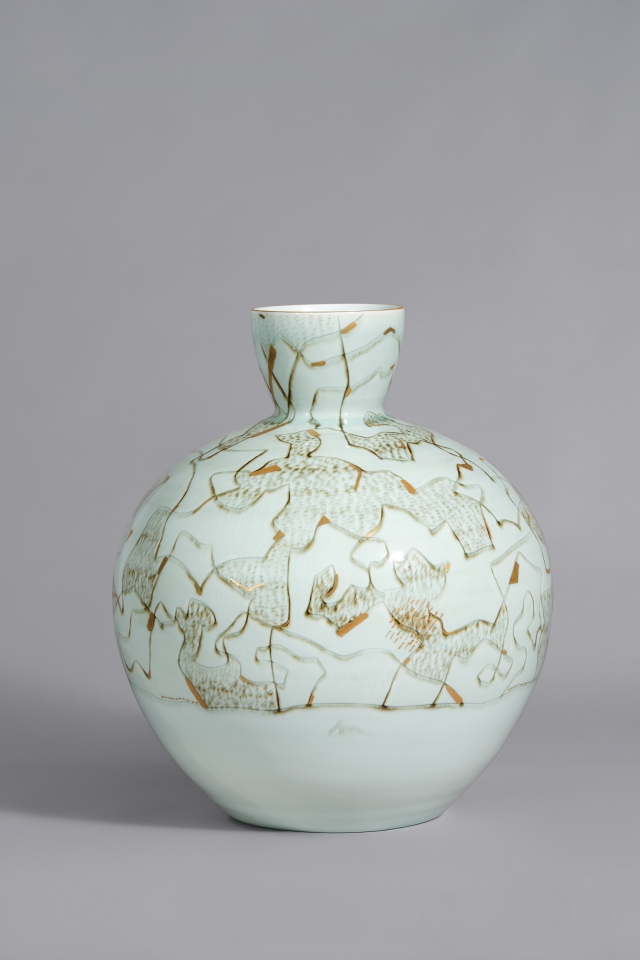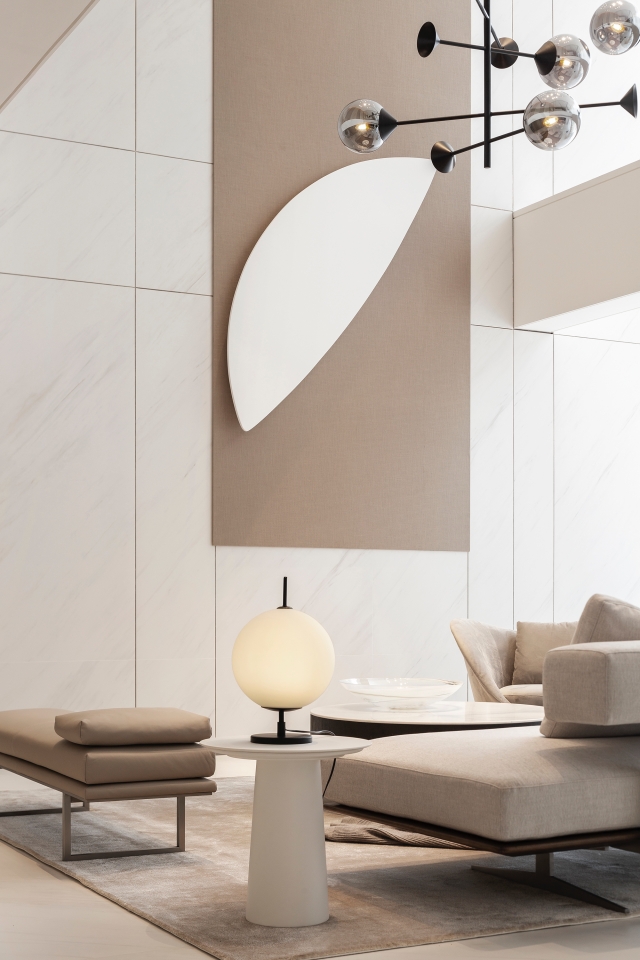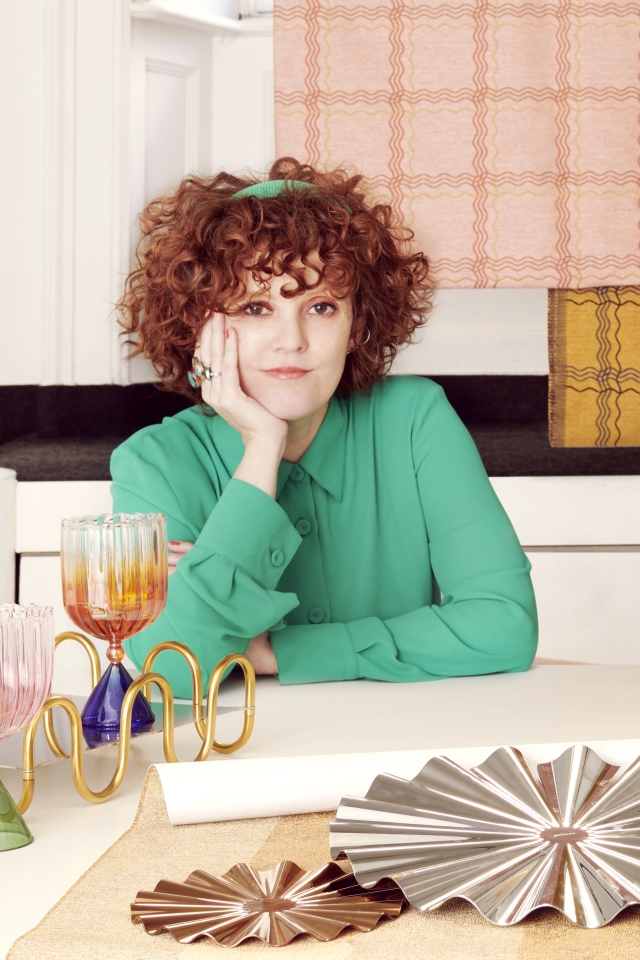The artist draws inspiration from everyday life, by capturing random snapshots and making structural transformations of the original images, Tang delves into the interplay and constant evolution of color, space, and narrative. . The exhibition at Lévy Gorvy Dayan & Wei derives its name from one of the most fundamental elements of painting, echoing Tang's exploration of the profound through presentations. One of the most influential contemporary artists in China, Tang Yongxiang is celebrated for his distinctive artistic language that masterfully juxtaposes images, shapes, and colors to challenge the viewer's visual experience and psychological perception. In his latest artwork series shown in the exhibition, Tang continues his exploration of images captured within the intimate sphere of ‘ten meters of life,’ as described by the artist himself. The work Two Trees with a Large Block of Blue on the Right (2023) portrays the trees adjacent to Tang's studio, while A Bouquet, Apples, and Bananas with a Background in Red and Purple (2023) depicts still-life objects arranged on his home tabletop. Additionally, works such as The Upper Half Is Legs and the Lower Half Is Blue (2023) and A Few Backs Silhouetted with a Green Triangle Below (2023) capture glimpses of parents' legs at the school gate during Tang's moments of dropping off or picking up his daughter.
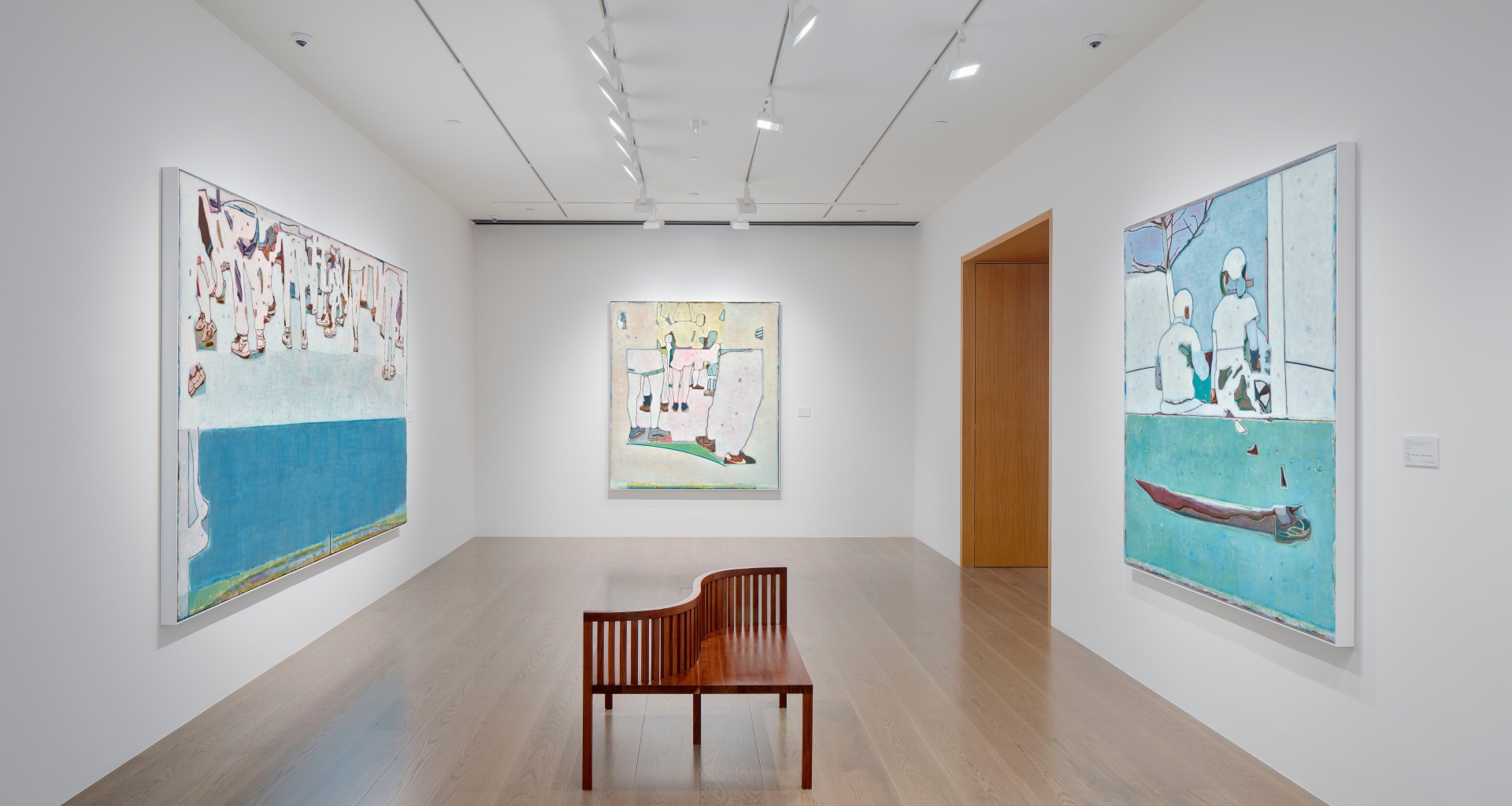
The reproduction of ready-made photography on canvas, however, is merely the initial step in Tang Yongxiang's practice. The artist then deconstructs the images, as guided by chance and intuition. Tang seeks out points, lines, and surfaces on the canvas, establishing new structural relationships while intentionally breaking traditional compositional rules. Realistic features of the subject matter are concealed beneath layers of oil, and are gradually diminished and fragmented into visual symbols and abstract forms. Negative spaces - the area connecting the subject matters, are strategically positioned at the visual focal point. Consequently, the original narratives of the images are then stripped away, allowing them to transcend into the realm of abstraction. Tang describes his painting process as akin to an hourglass, where the reduction of ready-made images represents the upper part of the hourglass, and as the creation progresses, it narrows. Eventually, it reaches a point where the artwork enters the lower part of the hourglass, immersing in constantly developed relationships of forms and colors. The artist does not pursue harmony within the composition; instead, Tang deliberately introduces elements to disrupt balance when the visual effect becomes too predictable or pleasing. In the work The Upper Half Is Legs and the Lower Half Is Blue (2023), for instance, a sharp black vertical line intrudes into the composition at the bottom, contrasting with the surrounding blurred brushstrokes and generating tension within the image.
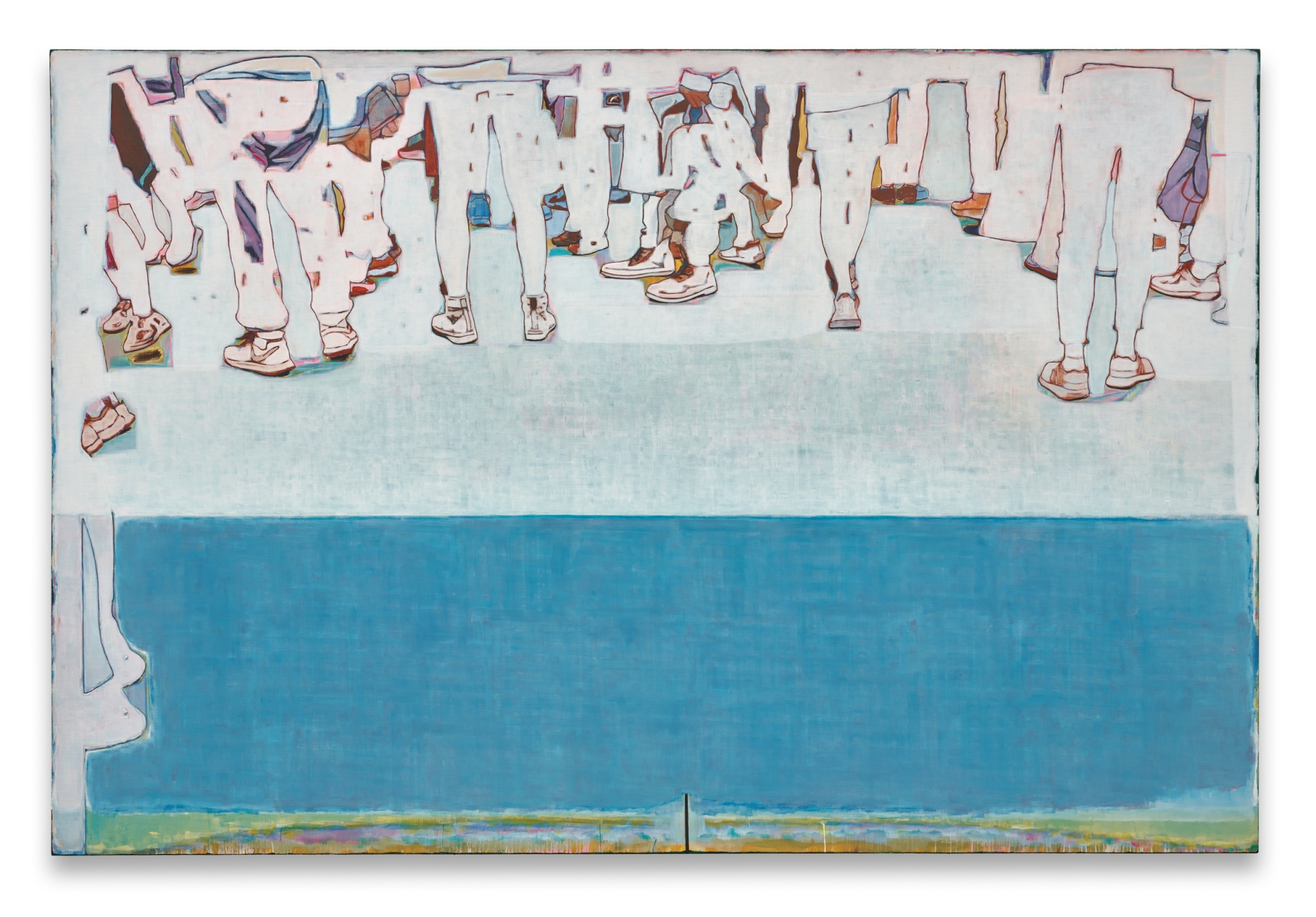
Oil on canvas
78 3/4 × 118 1/8 inches (200 × 300 cm)
© Tang Yongxiang, courtesy the artist and Lévy Gorvy Dayan & Wei
In Tang Yongxiang's process-based works, ‘layer’ holds significant importance. The artist uses untinted oil to paint, transforming the conflicting primary colors into tranquil and soft tones. Upon closer examination, subtle clues of the layered process can be discerned within the intricate details and along the edges of the canvas. These clues reflect the artist's ongoing struggle, contemplation, and choices throughout the creative process. Additionally, ritualistic yet almost imperceptible crosses are systematically layered across the composition. Through this mechanical approach, Tang restrains the expression of emotions and dissolves the presence of the ‘artist's hand’.
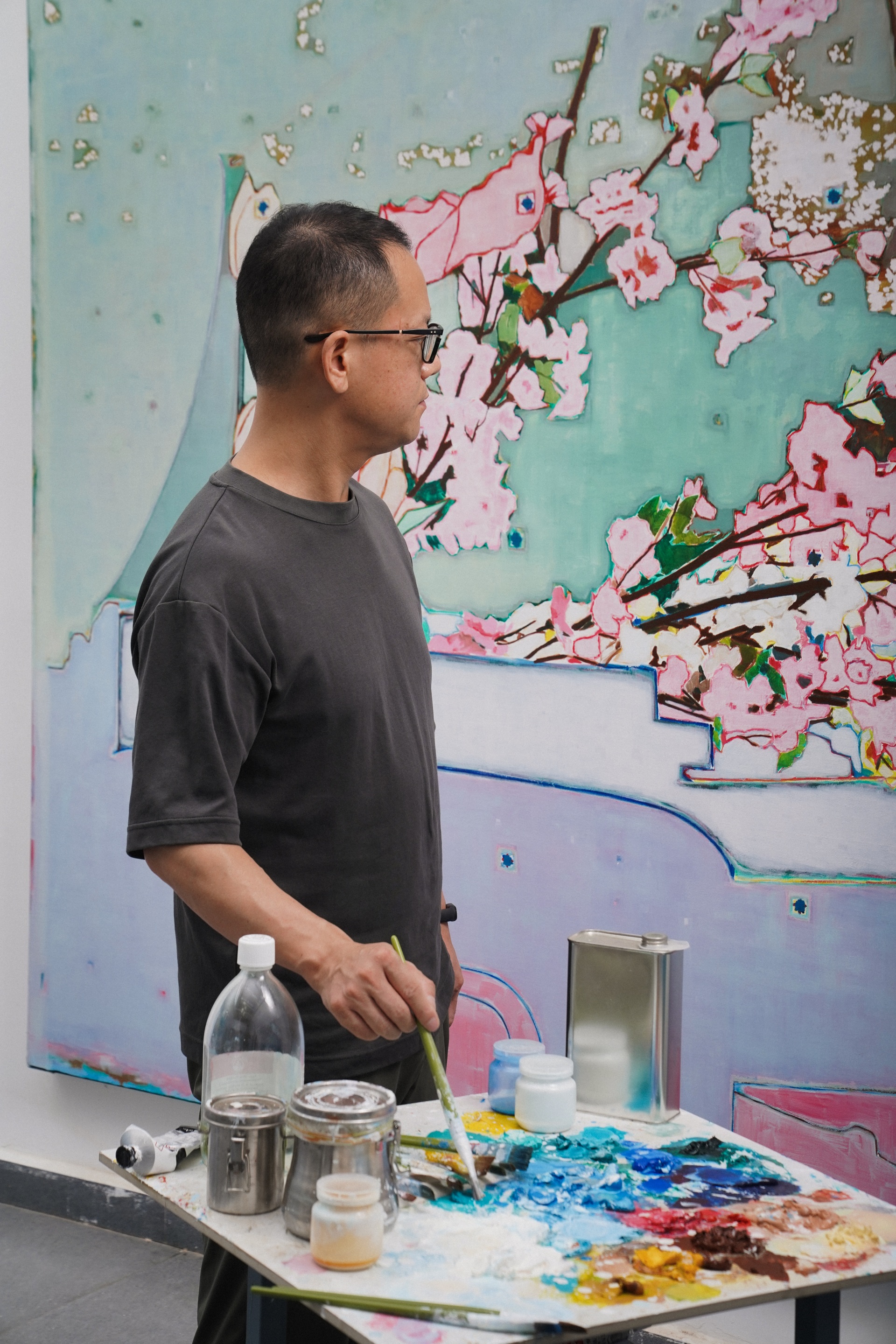
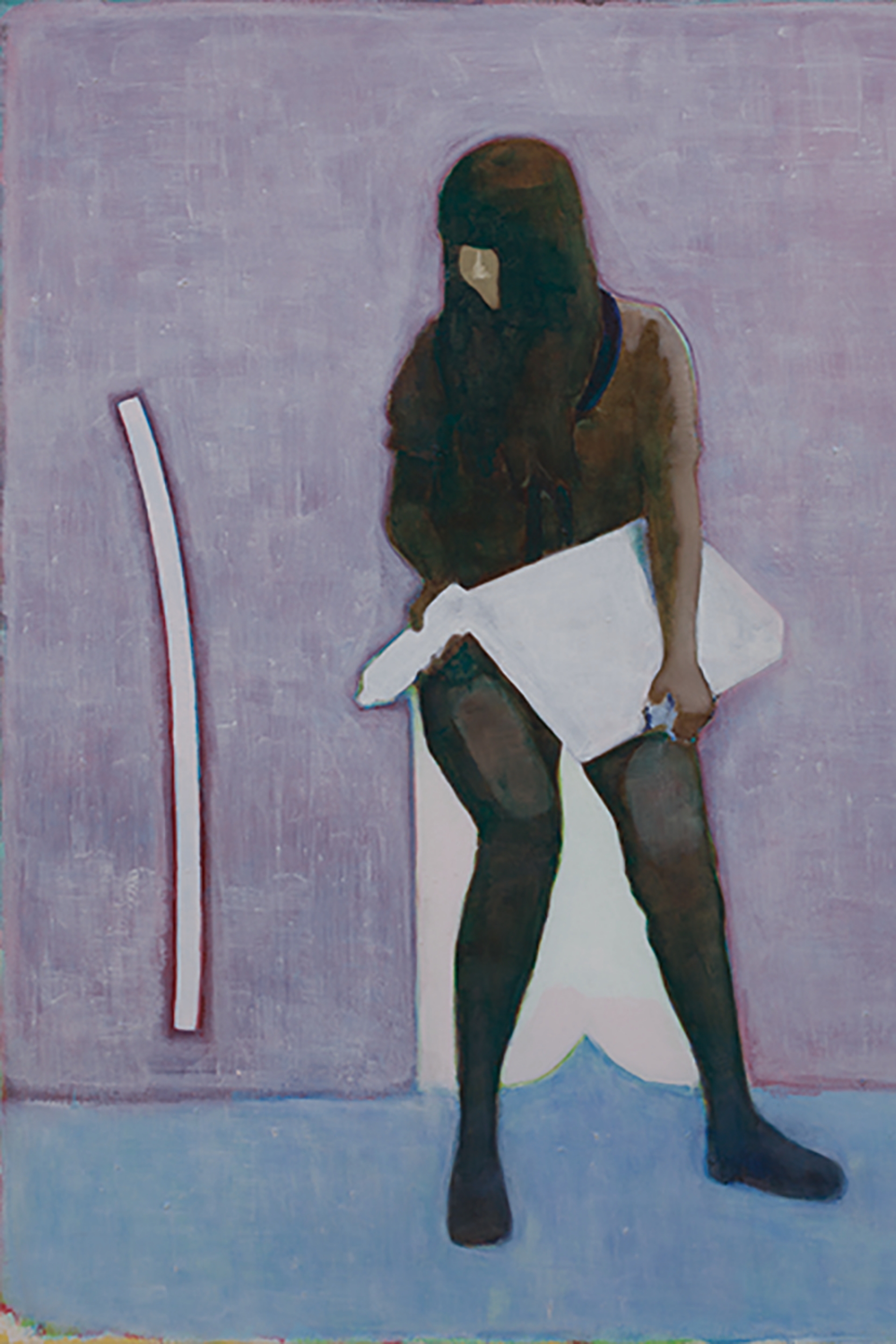
Rebecca Wei, Co-Founder and Chairman of Lévy Gorvy Dayan & Wei, expressed, “We are delighted to present Tang Yongxiang's first solo exhibition in Hong Kong. Our collaboration with Tang has been long standing, encompassing a group exhibition within our gallery space as well as showcasing his work in our art fair booth. Tang employs a unique approach to shape, space, and color, and captivates viewers with his thought-provoking creations. We encourage the audience to engage in diverse interpretations and reflections on his works. Lévy Gorvy Dayan & Wei remains committed to the Asian art market and will continue to introduce exceptional works by Chinese artists to international audiences.”
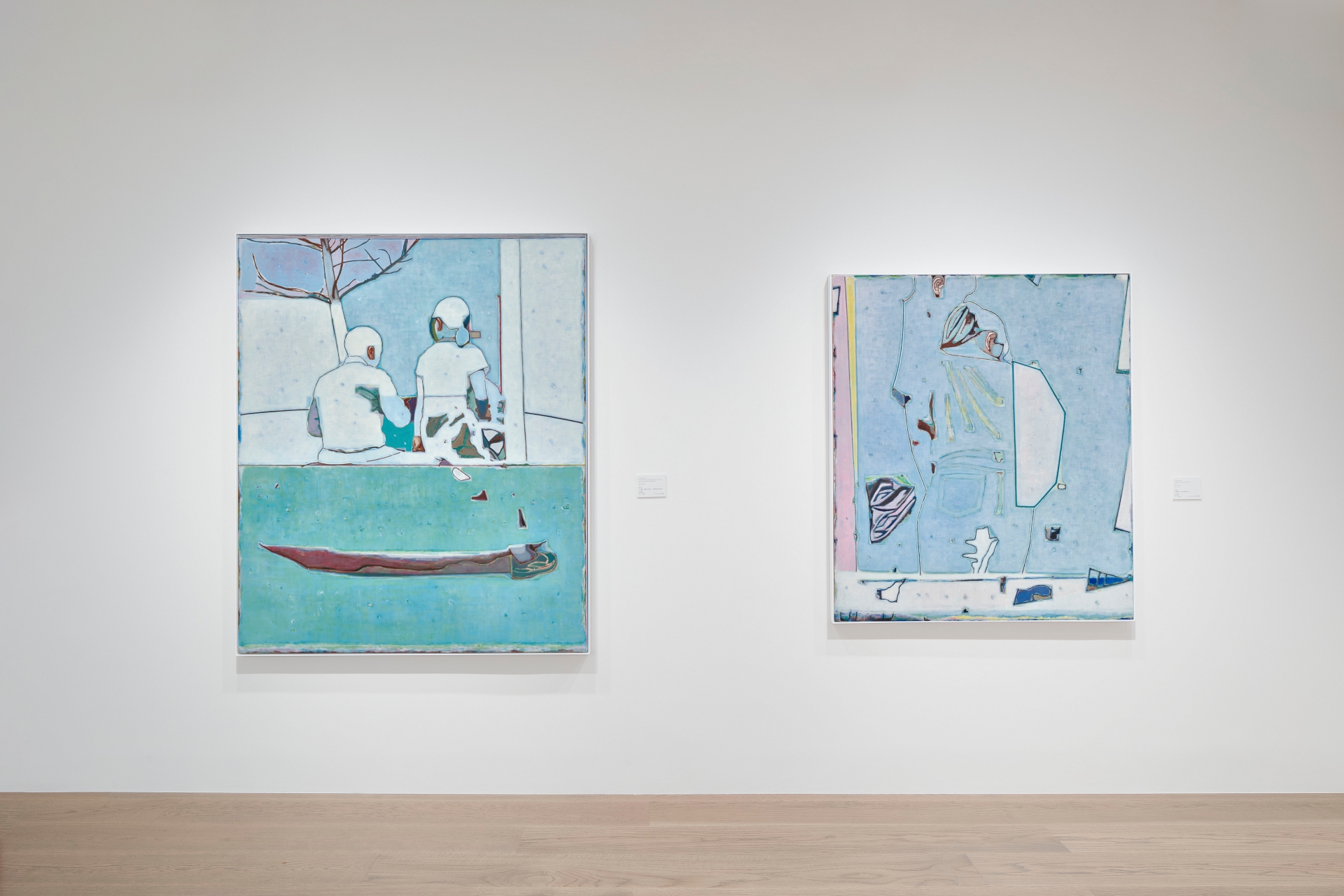
Using real-life images as the entrance to painting, Tang works with the changing relationships between forms and colors that are both constantly developed during the painting process. The images are mostly snapshots taken by the artist himself and often lack strong significations. Rather than arbitrarily manipulate the existing relationships embedded in the images, Tang prefers to engage in a restrained and persistent struggle with the images while relying on the given structures, leaving the surface with traces of the artist’s countless hesitations, decisions, and thoughts. In his painting process, contingencies and uncertainties would be the kinks in constructing new relationships.
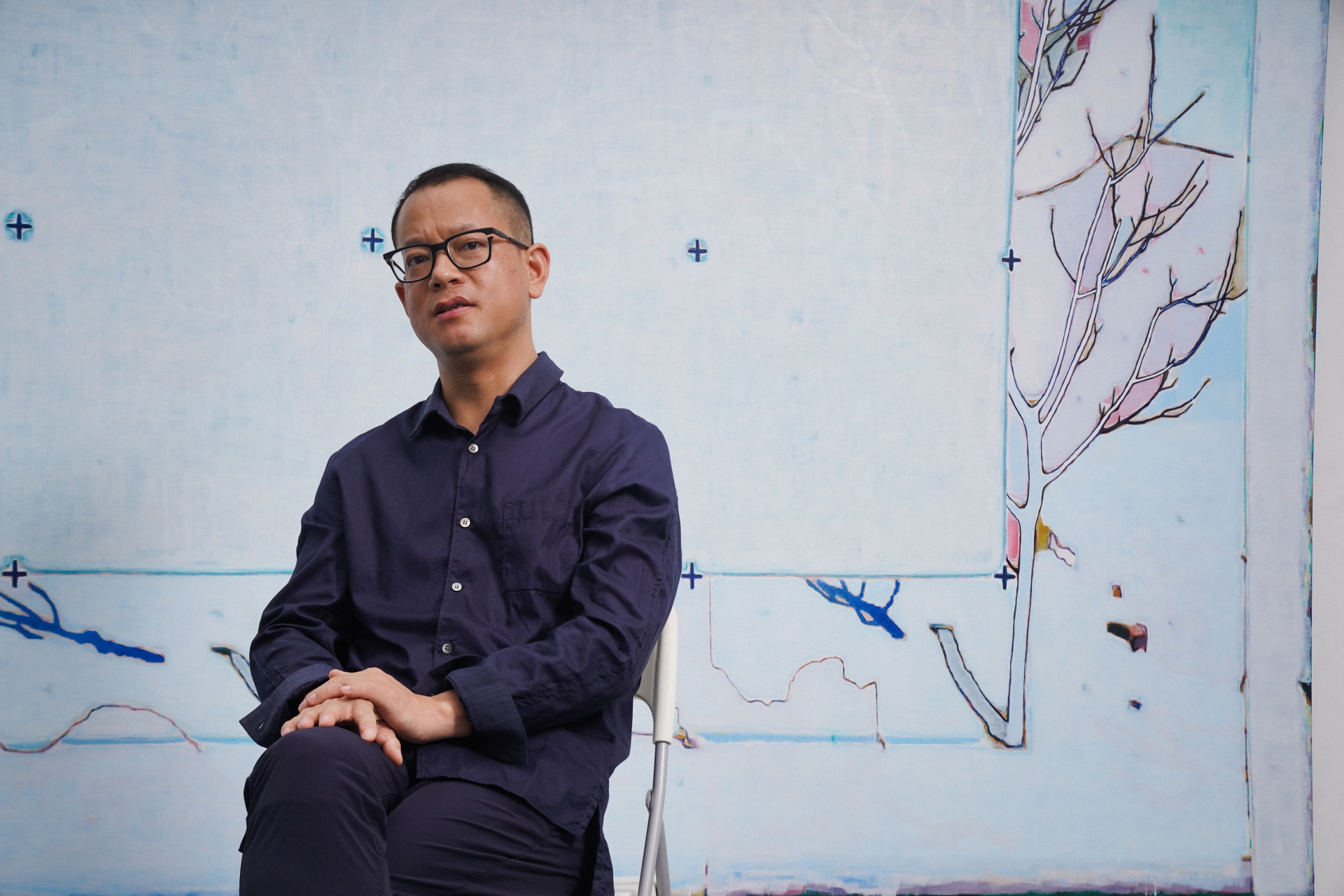
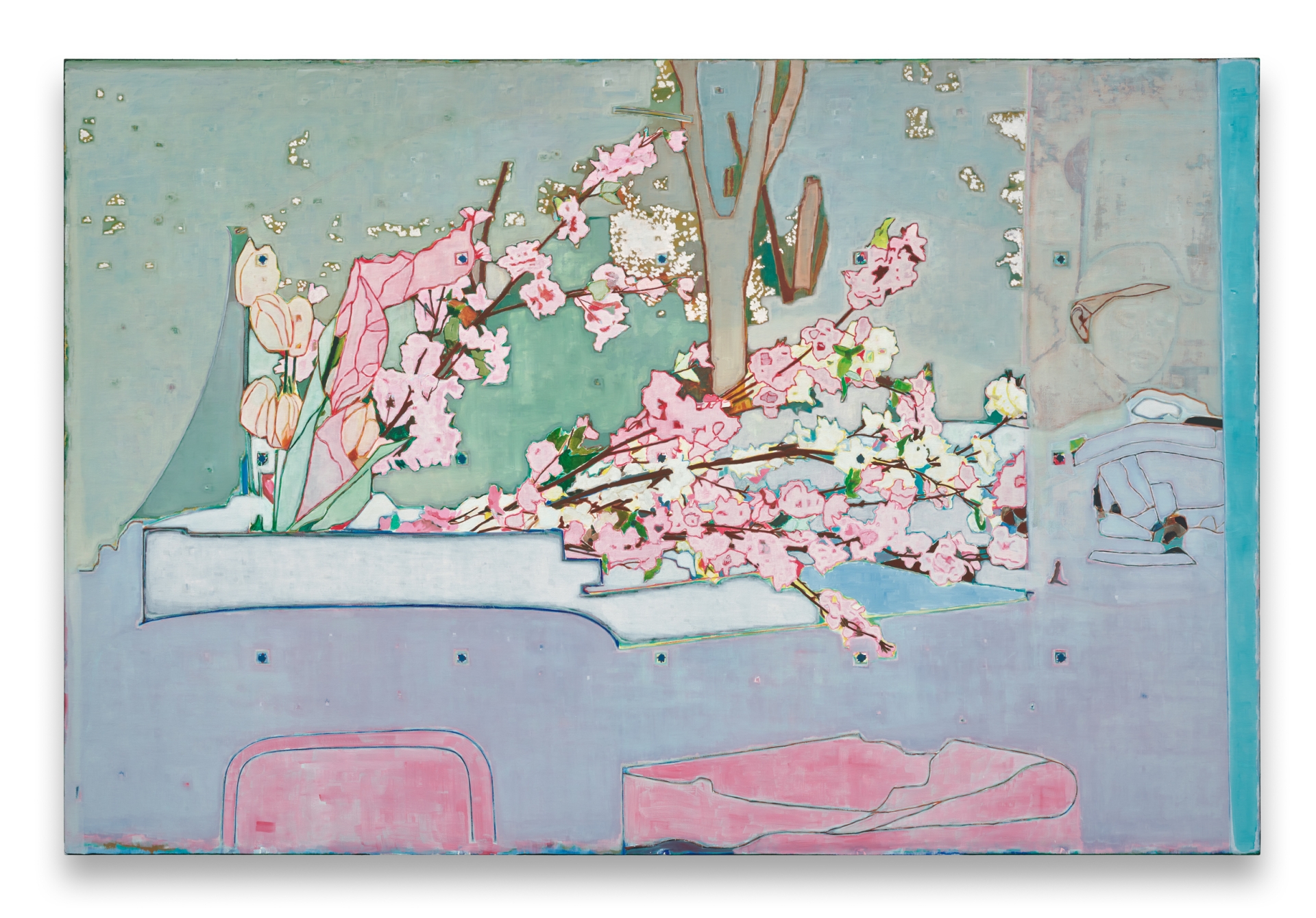
Oil on canvas
78 3/4 × 118 1/8 inches (200 × 300 cm)
© Tang Yongxiang, courtesy the artist and Lévy Gorvy Dayan & Wei
Helmed by Dominique Lévy, Brett Gorvy, Amalia Dayan, and Rebecca Wei, Lévy Gorvy Dayan & Wei is a collaborative international art venture that brings expertise and vision to its disciplines. The gallery represents and partners with artists and estates - realizing seminal projects and furthering legacies. From placing primary and secondary works of the highest quality and advising clients on collection development to harnessing its institutional relationships and presenting a curated program with scholarly publications, Lévy Gorvy Dayan & Wei puts artistic voices first. In forming Lévy Gorvy Dayan & Wei, the partners merge their respective specialties across twentieth and twenty-first century art; their reputations as leaders and tastemakers; and their separate histories as principals of galleries with exemplary exhibition programs. Both international and local in practice and perspective, Lévy Gorvy Dayan has unique spaces and unmatched market knowledge in New York, London, Paris, and Hong Kong, in addition to off-site presentations and satellite teams around the world.
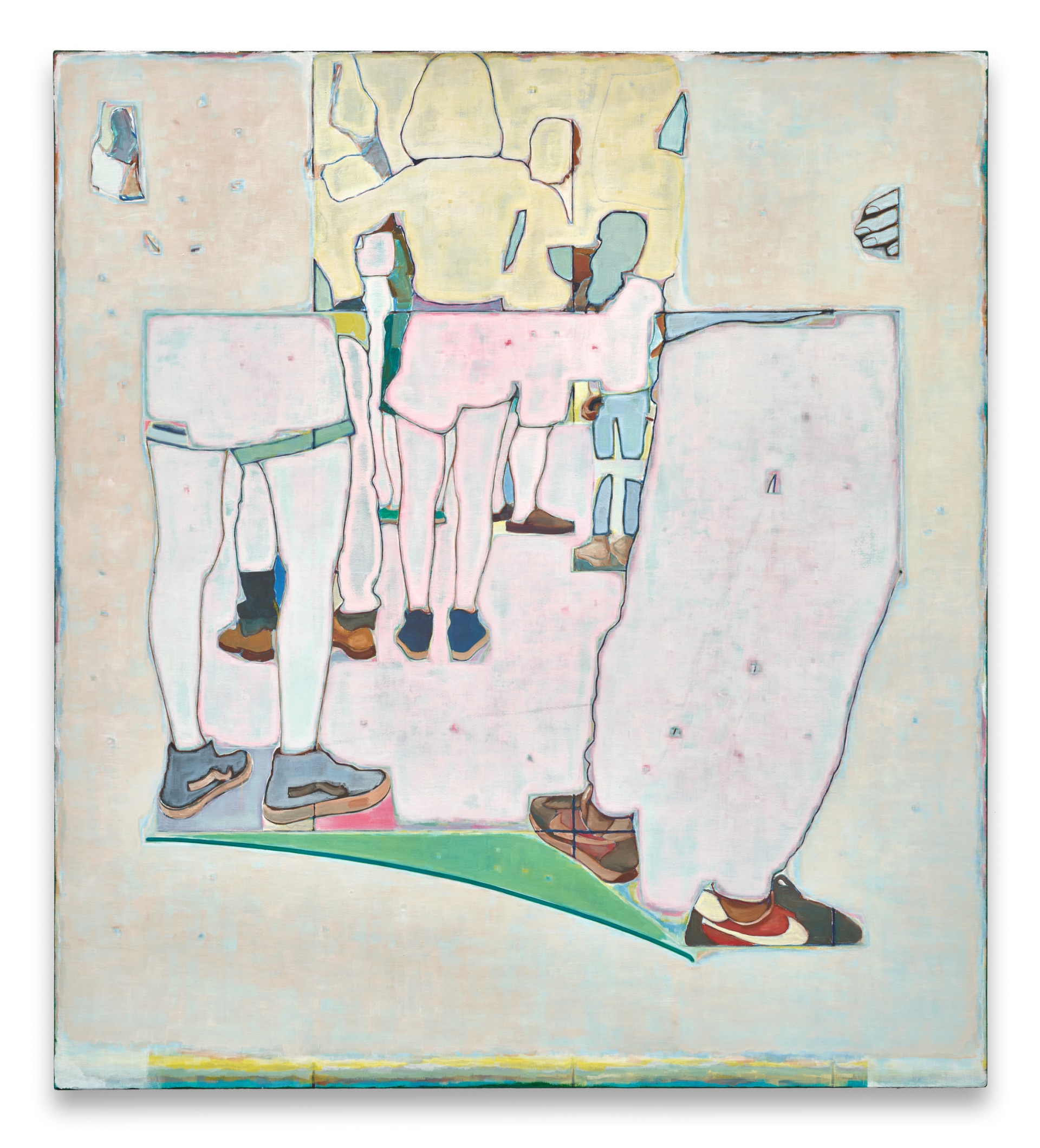
78 3/4 × 70 7/8 inches (200 × 180 cm)
© Tang Yongxiang, courtesy the artist and Lévy Gorvy Dayan & Wei
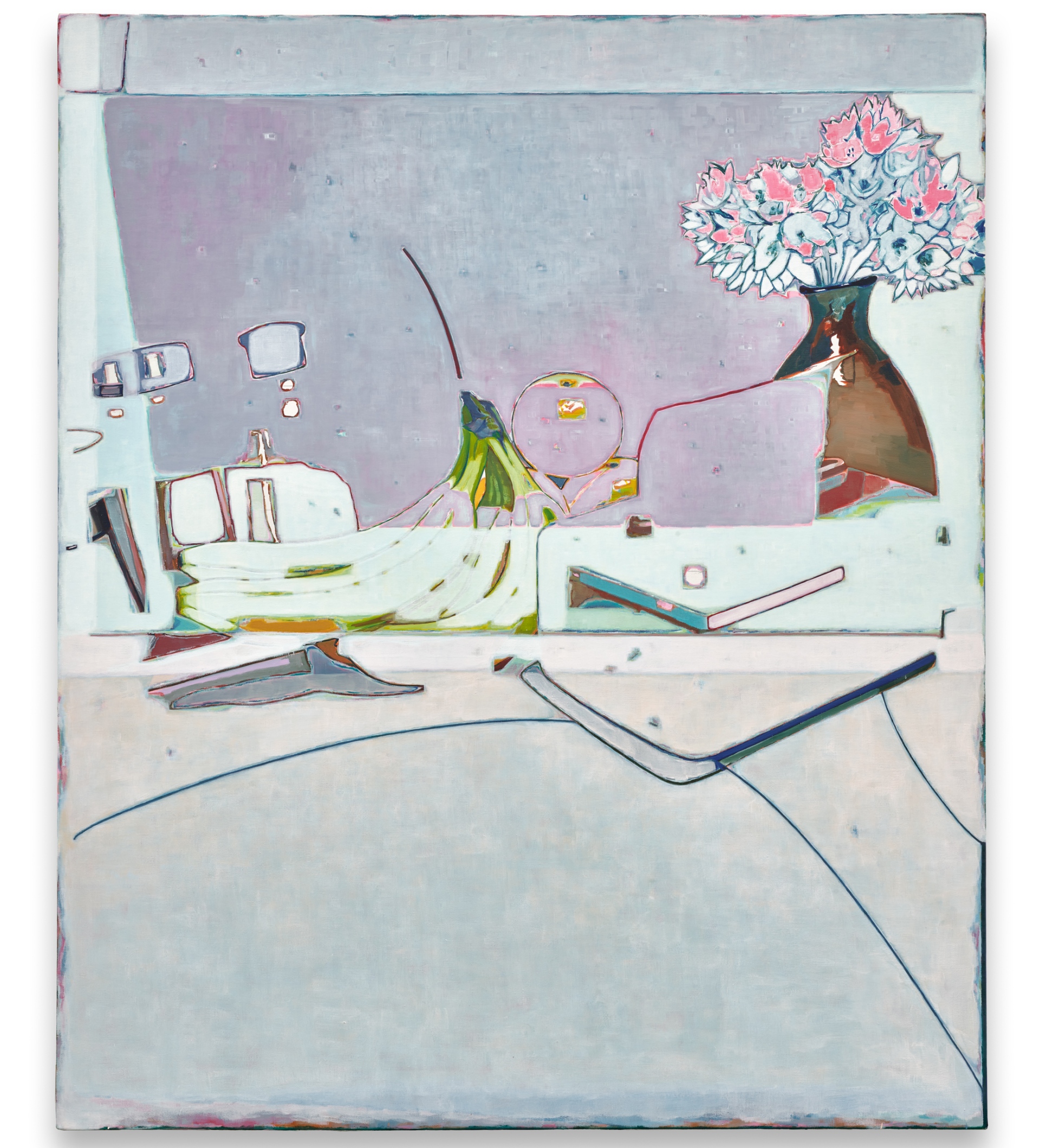
Oil on canvas
70 7/8 × 59 1/16 inches (180 × 150 cm)
© Tang Yongxiang, courtesy the artist and Lévy Gorvy Dayan & Wei





